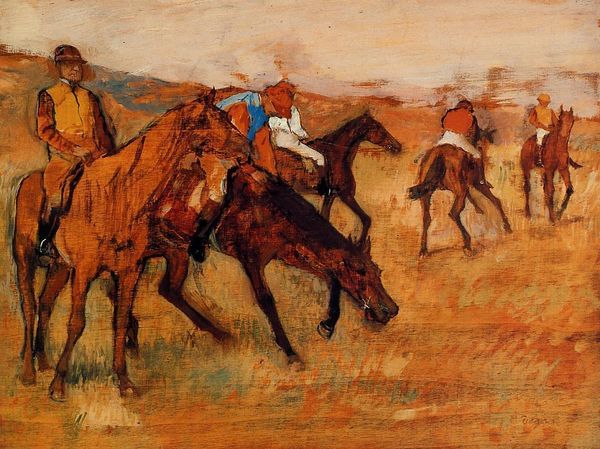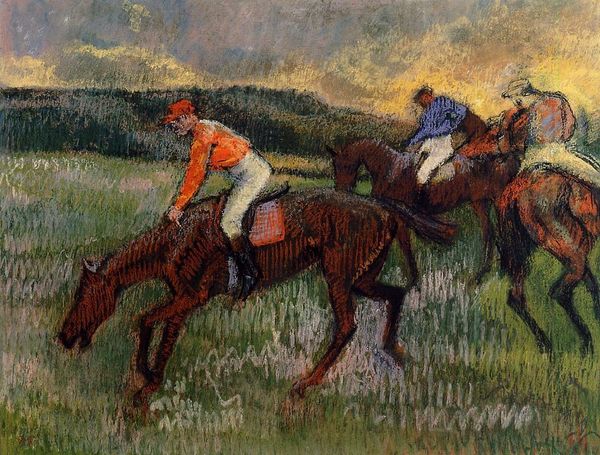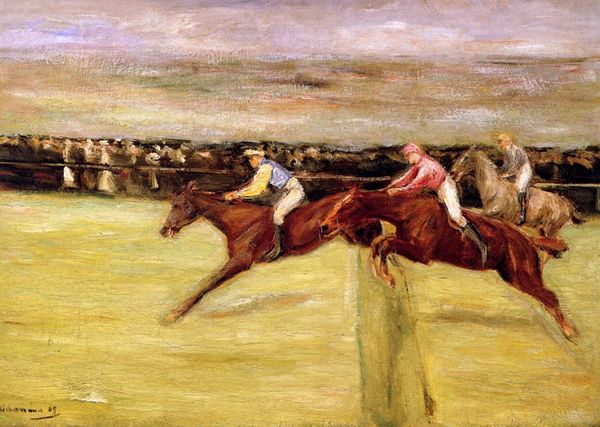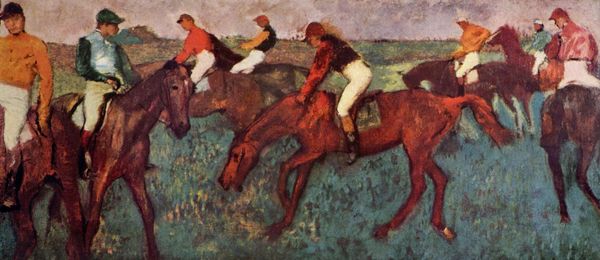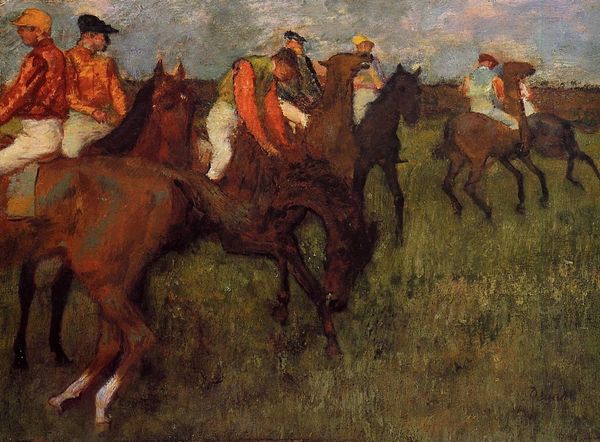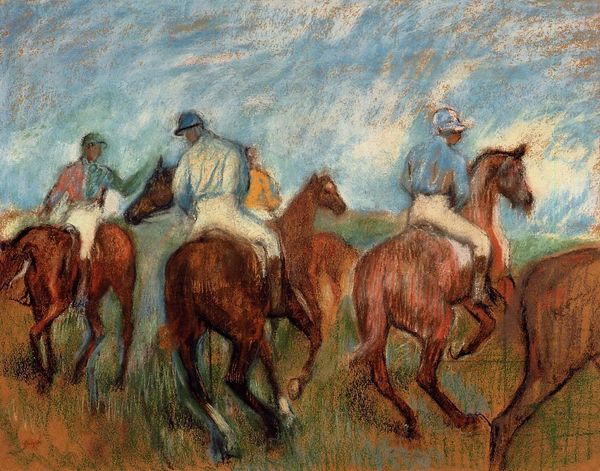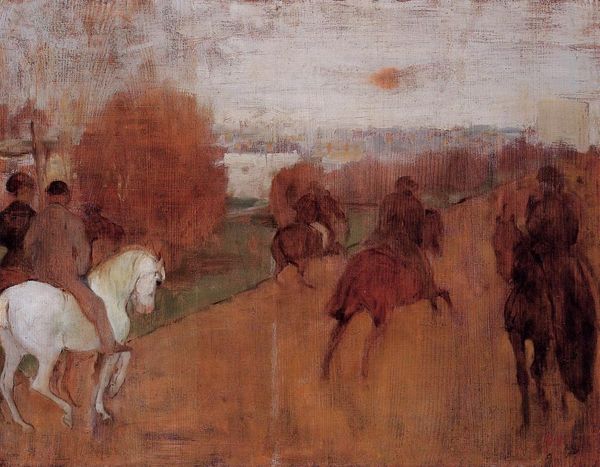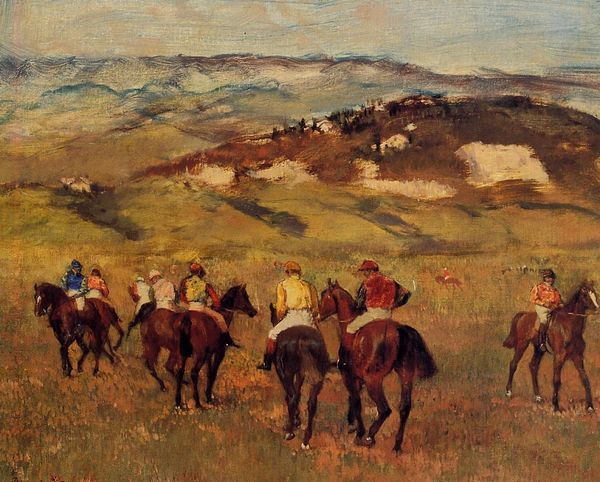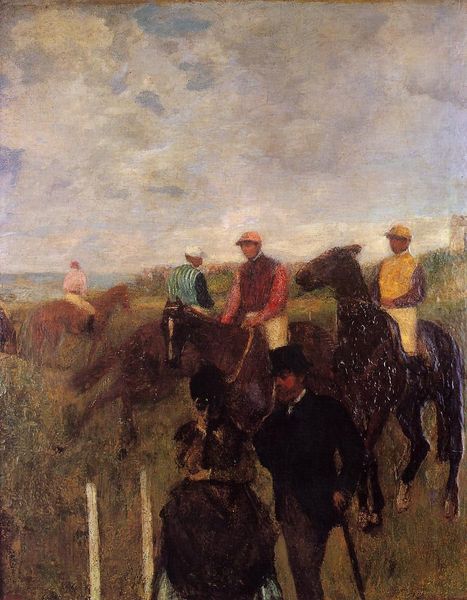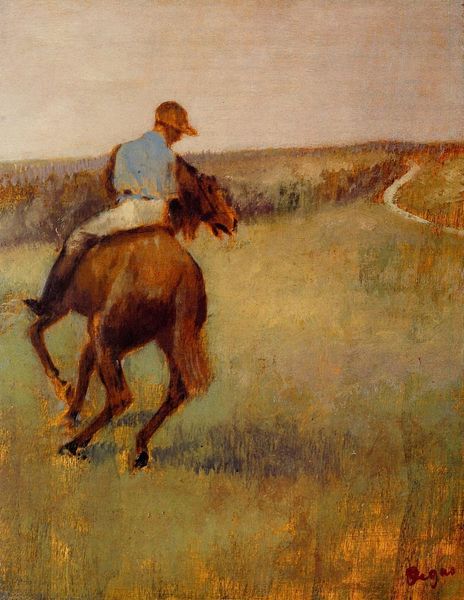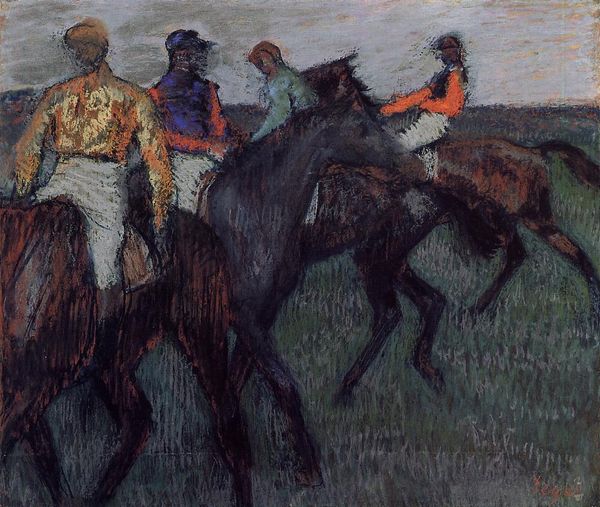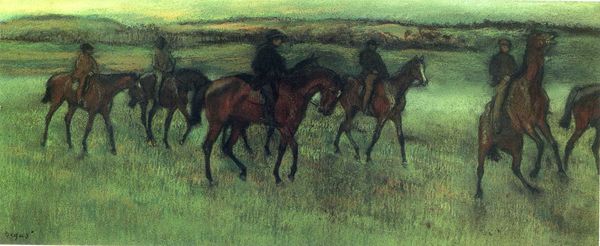
painting, oil-paint
#
animal
#
painting
#
impressionism
#
impressionist painting style
#
oil-paint
#
landscape
#
oil painting
#
horse
#
genre-painting
#
modernism
Dimensions: 26.5 x 34.9 cm
Copyright: Public domain
Editor: Here we have Edgar Degas' "Before the Race," painted in 1882. It’s an oil painting that presents jockeys on their horses, seemingly gathering before a competition. I’m struck by the subdued color palette and how it creates a rather contemplative mood, despite the anticipation of a race. What formal elements stand out to you? Curator: The composition is compelling, particularly its asymmetrical balance. Notice how Degas strategically places the figures, almost truncating them, defying conventional academic arrangements. Consider how this impacts our reading of depth. Does the layering of figures amplify or flatten the pictorial space? Editor: It does feel flatter. Is that related to the Impressionist style, prioritizing the surface of the canvas over creating an illusionistic depth? Curator: Precisely. Observe Degas’ brushstrokes: short, broken marks that do not blend smoothly. What effect do these fractured strokes achieve in rendering the landscape and the figures? Editor: It creates a sense of movement and fleeting light. It almost dissolves the forms. Is there a theoretical basis for these visual choices, beyond simply capturing an impression? Curator: Think of the philosophy of the time, a growing interest in perception and the ephemeral nature of experience. Semiotics might consider the colors and postures, creating a visual language around tension and anticipation. Consider also how the textural qualities and materiality speak to a departure from traditional, highly polished painting styles. It is, in effect, foregrounding the act of painting itself. Editor: So, the way Degas applies the paint is just as significant as what he is depicting, pointing to new ways of seeing. I appreciate understanding how those techniques are so important in impressionistic art! Curator: Indeed. Examining these qualities brings us to the very core of modernism, disrupting prior academic codes and opening up avenues for abstraction and subjective experience.
Comments
No comments
Be the first to comment and join the conversation on the ultimate creative platform.
